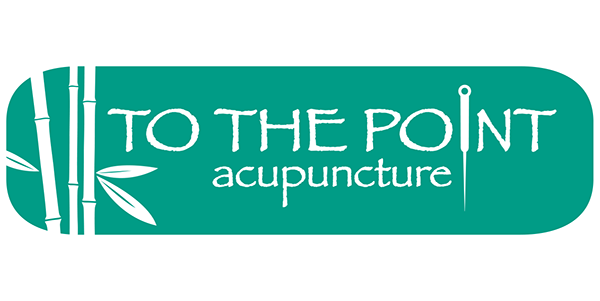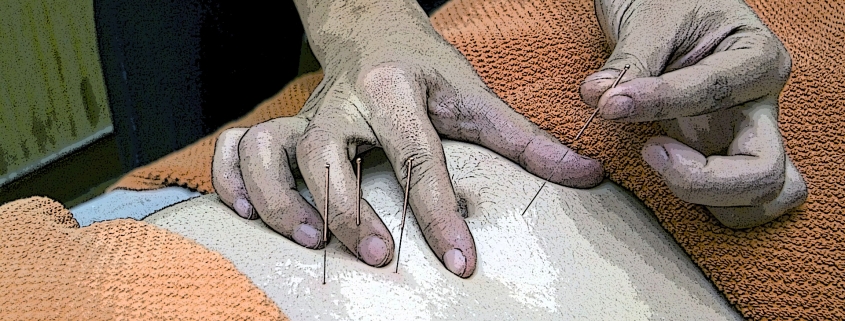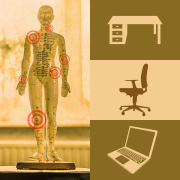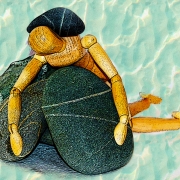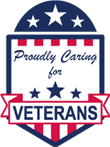Acupuncture Versus Dry Needling
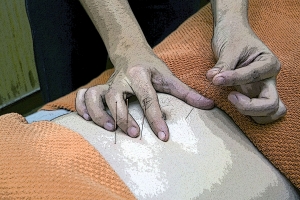
Many people mistakenly assume that dry needling is simply an alternative labeling term for acupuncture, as they both involve the insertion of thin needles into the skin. The difference between the two is actually more complex. If you have been debating whether to pursue acupuncture or dry needling for treatment of a painful physical condition, it’s important to understand what sets them apart and how your choice of one over the other could result in serious health consequences.
A Difference in Approach
Both acupuncture and dry needling can be used to treat chronic pain, but these treatment methods approach the body differently.
Acupuncture has been around for over 2000 years and is known for treating a broad range of health conditions. An acupuncturist will treat physical pain by using needles (as well as other modalities) to help move/release an individual’s healing energy, or qi. The needles are strategically placed on the body according to a patient’s symptoms; placement may occur at trigger points (knots in the muscles of the body that feel tight) or along meridians (the energy pathways within the body).
Dry Needling appeared in the late 1940s and was originally done with empty hypodermic needles (a “dry” needle meant that no medication was injected into the body). Dry needling today is done with acupuncture needles. Dry needling is specifically intended to treat musculoskeletal and myofascial pain via muscle trigger points. The needles are used to directly stimulate these trigger points, with the aim of alleviating pain and cramping, improving range of motion, and reducing muscle tension. Needles may also be inserted in the tissue surrounding the primary pain point.
Compared to acupuncture, dry needling has only been around for a very short period of time. Limited research has been done in regard to its safety and health benefits. Some studies even suggest that stretching and massage therapy may be just as effective as dry needling.
A Difference in Opinion
Dry needling here in the U.S. is promoted as a stand-alone treatment modality performed by physical therapists, massage therapists, chiropractors, and athletic trainers. These practitioners often claim that dry needling is not acupuncture because it is not based on Traditional Chinese Medicine, yet they sometimes use acupuncture studies to support the argument that their treatment is effective. It should be noted that dry needling is actually a well-established treatment method that is recognized by the World Health Organization as a subtype of acupuncture.
Training and Regulation Issues
There are no standard guidelines or licensing requirements for dry needling as a therapeutic treatment, which means that it can be performed with minimal training. It is not uncommon for a non-acupuncturist to receive as little as 20 hours of training during a weekend workshop. This is in contrast to a licensed acupuncturist, who receives more than 1300 hours of combined acupuncture training, hands-on training, and supervised clinical training. Acupuncturists also receive over 400 hours of training in diagnosis and biomedicine—all through an accredited program of study that requires a national board examination followed by continuing education.
Safety Issues and the Patient Experience
Acupuncturists are highly skilled and educated practitioners. Because they have had extensive training, their patients experience little (if any) discomfort during treatment. Practitioners of dry needling do not have the same level of training and proficiency. They can sometimes be too aggressive with needle insertion or inadvertently contaminate the needles; this often results in additional pain for the patient and potential bleeding, bruising, and infection. Needles up to 4 inches in length may be required to reach muscle tissue located deep within the body, leading to more serious complications, such as pneumothorax/collapsed lung and nerve injury.
Dry needling is widely recognized as an invasive procedure. Several national acupuncture associations and organizations, as well as the American Academy of Physical Medicine & Rehabilitation and the American Medical Association, have voiced strong concern about patient safety. In 2011, The American Association of Acupuncture & Oriental Medicine issued the following Position Statement:
The U.S. Department of Education recognizes ACAOM as the sole accrediting agency for Acupuncture training institutions as well as their Master’s and Doctoral Degree programs. Training in Acupuncture, which has been rigorously refined over the course of hundreds of years internationally and forty years domestically, is well established and designed to support safe and effective practice. Attempts to circumvent Acupuncture training standards, licensing or regulatory laws by administratively re-titling acupuncture as “dry needling” or any other name is confusing to the public, misleading and creates a significant endangerment to public welfare.
Acupuncture Versus Dry Needling: Choosing a Practitioner
If you are interested in acupuncture or dry needling as a treatment option for pain, please take the time to investigate options in your area. Here in the U.S., you can easily search for board-certified acupuncturists through the National Certification Commission for Acupuncture and Oriental Medicine (NCCAOM). You can also check with your state’s Acupuncture Licensing Board. If you are searching online for the credentials of a dry needling practitioner, you likely won’t find much. Ask questions about their background and training before you agree to any kind of treatment plan. Be safe out there.
Resources:
Dry Needling Controversy and Background
Relationship Between Acupuncture and Dry Needling: Clarifying Myths and Misinformation
Position Statements on Dry Needling
Evaluating the International Standards Gap for the Use of Acupuncture Needles
